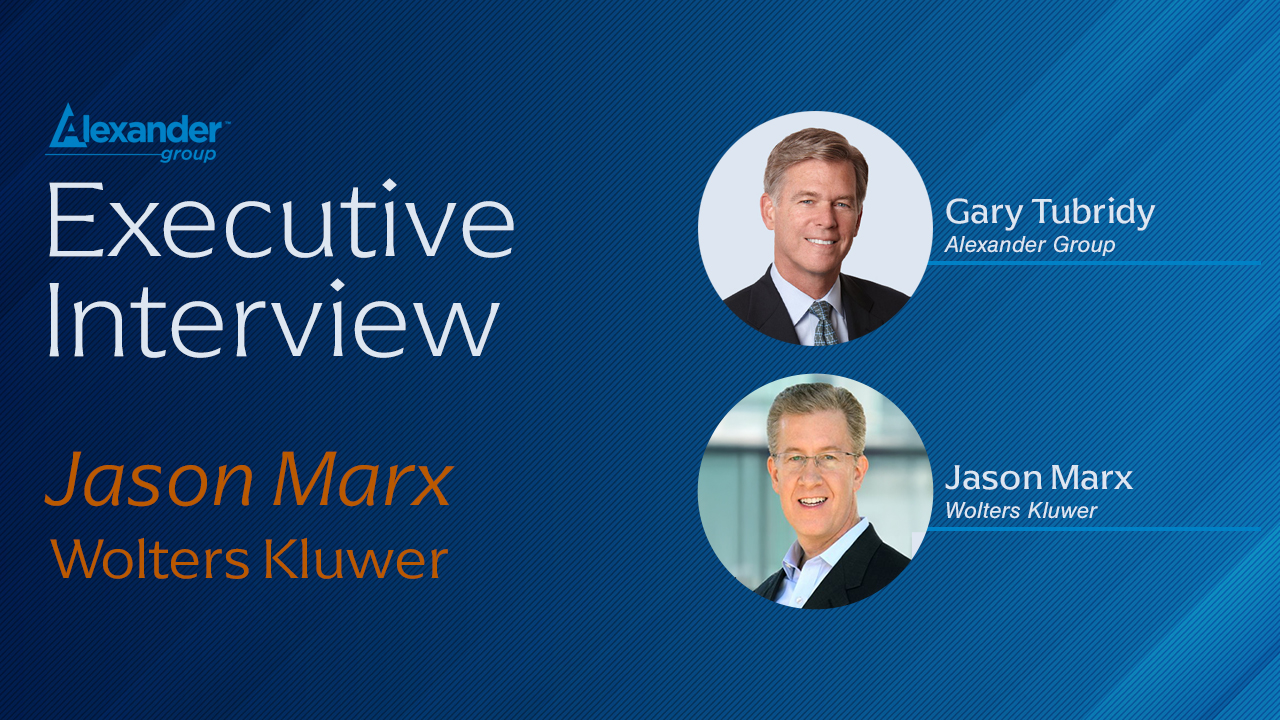Dave Eddleman: Welcome, everybody, thanks for joining us. We’re here today with Mary Burke, who is group head of sales and account management for London Stock Exchange Group in the Americas. Mary, thanks for joining and just have a few questions about the go-to-market environment today. I wonder if we could just start off with some general insights on trends in the financial marketplace. I guess we’re almost through 2024 now and probably into 2025 and just want to get your take on what’s going on, as well as how it impacts the businesses of the LSEG.
Mary Burke: Great to be here with you and thank you for having me. I always say to my team and in any forum, it is an absolute privilege right now to work in financial services. There’s just so much change, so many exciting trends, so many opportunities. Obviously, a fair amount of risks as well, but it’s our job to really understand those trends, those opportunities, those risks, translate them into our product strategy and our roadmap, and help our customers take advantage of the opportunities in the marketplace. There’s so many right now, but I would call out regulation, de-regulation. That’s a constant theme and trend for us and our customers as we help support them with data and capabilities around that. Systemic changes right now in investment management, active, passive digital assets, digitalization, the endless quest for productivity gains, the journeys that our customers have been on around total cost of ownership and infrastructure, the cloud journeys, and of course, I’d be remiss to not mention generative AI.
Dave Eddleman: Of course.
Mary Burke: So as I think about all of those, again, we are providing data and technology solutions to our customers to support them with these challenges, with these opportunities, with everything that’s happening in the industry right now. One that I’ll call out is really the cloud. We have been helping our customers for years with their cloud journey. They expect to get to our data in a frictionless way where they want it.
Mary Burke: So we’re really committed to meeting our customers where they are. And that means from a go-to-market perspective, that we have to have a robust ecosystem of partners. So we’re agnostic, working with all of the cloud providers and that we’re really enabling our customers to get access to our data where they want it, when they want it in a frictionless, fast, low latency type way. So that’s one major trend for us. It also means not only influencing our partner strategy and our product roadmaps, but also our go to market. Our teams have to have the expertise, the credibility to help our customers on these journeys. The second one I would call out is generative AI. Of course, it is the topic du jour right now. But at the core of every AI strategy, every AI conversation is data. And as the world’s largest depth and breadth of data assets for financial services, our depth and breadth and quality of data has never been more important to our customers. We’re having so many conversations right now with our customers about our data assets, the quality of our data, the integrity of our data, because everybody’s very focused on that right now. Garbage in, garbage out really need high quality data to power the AI capabilities, to power their strategy, to realize the productivity gains, to realize the alpha gains.
Dave Eddleman: Well, that’s a lot like going on the marketplace and just has so many products and services. And I can imagine since it’s very global, that you have different coverage models, different deployments around the globe, but just within the Americas the part that you’re leading up, I can imagine there’s lots of silos. Not in bad ways necessarily, but through all of that, how do you sort of drive a consistent, holistic approach to the go-to-market model and rules of engagement and some more tactical things?
Mary Burke: Yeah, absolutely, and maybe just taking a step back because a lot of people don’t even know who LSEG is.
Dave Eddleman: Yeah, please, that’d be great.
Mary Burke: London Stock Exchange is in our title, but it’s actually just one component of our business. LSEG acquired the Refinitiv business about three years ago, and that really created the world’s leading market infrastructure data and technology company. So, we are a large global publicly traded company, about $9 billion in revenue. We have over 24,000 employees globally. We have 40,000 customers that we service in 190 countries. So, we have incredible breadth and depth of assets, really powering the entire financial ecosystem.
Dave Eddleman: So easy to stay consistent with all of that.
Mary Burke: Yes, of course. I think the one decision that was made very early on was that we were going to market as one LSEG. So, top of the house decision that our sales, account management, customer success organization was going to be enterprise across the businesses. And we’ve had steadfast commitment to that type of integration and that type of approach to going to market. I think it’s had tremendous benefits for our customers, and it’s also unlocking revenue opportunities for us. But as you can imagine, it’s certainly not without its challenges. So, for us it’s meant having one a robust go-to-market strategy. We’re servicing so many customers across so many communities, across so many geographies that we need to have a really robust strategy around how we segment our customers, how we service our customers. So, that’s at the forefront. And then, of course, people and culture. We’ve had a real one LSEG push and mindset. And we really reward one LSEG behaviours and really try to break down the silos. We also introduced about 18 months ago a common methodology, so that all 2,000 plus of our sales account managers, customer success managers around the globe are using the same framework. They’re using the same language, they’re calibrating deals the same way. And I think that’s really provided us an opportunity to upskill, but also just create a really even playing field and ensure that we’re showing up to our customers in an incredibly consistent way no matter which geography you’re in, what product area you’re in. So, that’s another thing that we’ve done to really address that and really go to market as one LSEG.
Dave Eddleman: Yeah, that’s important. And I know you’re looking at sales and account management now. Previously, you were involved with customer success globally and for us, when we look at a lot of different models, that’s always an interesting intersection between customer success and the handoff to customer success. And a lot of the dynamic there on who’s selling, who’s upselling, who’s cross-selling and renewing and all of that. So maybe you could just touch on that. I know there’s a lot there with LSEG, but maybe you could touch on a few of those interesting details.
Mary Burke: Yeah, sure. And maybe just taking a step back. We created the Customer Success function about five years ago, recognizing that we were so focused on gross sales, selling, selling, hunting, hunting. And actually, if we could have a meaningful impact on retention, it would really drive revenue growth. Sounds very simple, but I think we had a bit of an “aha” moment that that’s really where we needed to focus. So we created the function, we created the capability. We took lots of disparate roles around the organization that we’re touching the customer in different ways, pulled them all together and really embarked on an 18-month transformation, creating the customer success function. A couple of things we did at the start. One, it’s within our sales and account management function. So it stays within the revenue function. Really important to us that our customer success managers are absolutely part of that organization, part of the deal teams, part of the coverage teams. And I remember very early on, one of the consultants that we were working with framed it all as pre-sales and post-sales. And that didn’t work at all. I looked at it and said, that’s not our business. We have a subscription revenue model business. The majority, good majority of our sales are coming from our existing customers. We’re always servicing, we’re always selling. So we really tried to break that kind of pre-sales post-sales frame and really make sure that people really embed that we are all in this together. We’re all selling, we’re all servicing.
And then we did a lot of, I’d say, kind of foundational things around how we work, how we show up. We looked at role clarity. I know it sounds very simple, but a lot deeper than just a RACI on a PowerPoint slide. We really got into the okay, who does what? Where does this capability best live? And got real clarity for our teams on what that looked like. We also introduced customer lifecycle framework. Again, very basic, but we didn’t have that. So we laid out how do we engage a customer throughout the entire lifecycle. And again, recognizing that most of our sales are coming from our existing customers. So it’s a circle, right? So we did things like that. We also ensured that we had the right people that could go along with us on the customer success journey, that they knew what we were trying to do and could let go of kind of old ways of thinking about it and really buy into the vision. So making sure we had the right people, the right upskilling, and then a heavy focus on our deal and customer teams. So really making sure that we didn’t act in functional silos, but we all worked as a team on behalf of the customer and keeping the customer as that North Star.
Mary Burke: So heavy focus culturally on deal teams, coverage teams. And then we tried to really embed things. So things like in Salesforce, a salesperson can’t advance a deal past a certain stage, unless they have made it clear that the Customer Success Manager has been introduced. And if they haven’t, that gets kicked back out. So we tried to really put some of the right things in place in the systems. But I would say ultimately it comes down to people feeling like they’re all part of the coverage team, all one team. Our customer success managers drive 20% of lead generation for our sales teams. So there is a really strong interlock there. And I think everyone realizes you can’t grow what you don’t retain. So we have a really strong interlock amongst the teams. But when we think about our the breadth and depth of the business that I talked about earlier, it’s really a balance of account managers who own the overall relationship with the customer across many product lines, right? And they have to have a complete view of the customer. And then our sales and customer success teams that are deeply specialized in communities, workflows, products and always kind of getting that balance right.
Dave Eddleman: Yeah, it sounds like you’ve really upscaled the CSM role, probably a lot of different types of roles within that community. I really like how you said you’re bringing that into the beginning of the sales cycle. And really, it’s not even a beginning, it’s, as you say, a more circular type of process. What have you seen in general across the customer experience, we’re talking a lot about that in the B2B world and how that’s really broadening across the organization, what kind of improvements have you experienced or maybe expect to experience in customer experience?
Mary Burke: Yeah, the first thing that comes to mind is digital. The pandemic forced us very quickly to create some digital capabilities, because how we showed up at customers no longer was an option. So we did some real grassroots efforts then. But then we realized customers like that type of service, right? And it’s not just our long tail of customers, it’s all of our customers want a digital capability, right? They may not want to talk to their customer success manager to find out the latest and greatest of a product roadmap, or to learn how to do a function or capability in the products. So I would say heavy focus for us on how we digitalize that customer experience, but how you also make that consistent throughout the entire journey in making sure that everybody’s synced up so that customer success is doing one thing around digital, marketing is doing another, product is doing another. It’s really important for us that you join all of those things up. Otherwise, you have just a completely fragmented customer experience. So, we’ve been really focused on that. We’ve also seen over the past couple of years the benefits of the customer success function, the benefits of an elevated account management function, getting a better understanding of customer health, making sure that we’re much more disciplined around how we show up to our customers with value plans. And what we’ve delivered for them. And we’ve seen the retention improvement as a result.
Dave Eddleman: An important metric.
Mary Burke: So, I’d say customer experience certainly up on just how we’re showing up, the digital capabilities being much more thoughtful around all of those things.
Dave Eddleman: Last question, and it kind of gets back to trends. Anything that you see on into 2025 into 2026 that could be a major change in your go-to-market strategy or you think you’ve got enough improvement going into this year in 2025?
Mary Burke: Yeah, great question. I think for us it’s going to just be staying on top of the trends, staying on top of the opportunities and the challenges our customers are facing, making sure we have those trusted relationships with our customers, making sure we have the right experts and the right expertise to be credible to help our customers with all of these journeys. So, I think the trends that we talked about earlier will continue. They will certainly persist. I think AI for financial services really just the beginning. So, I think we’re going to see an exponential advancement there and we’re really excited about our position to help our customers with that challenge.
Dave Eddleman: Well, I’m glad you mentioned Gen AI because it comes up in just about every conversation, not just financial services. Well, thank you so much. These are really great insights. And again, thanks for coming in and and talking to us.
Mary Burke: Great. Thanks for having me.
Dave Eddleman: All right. Thank you.




